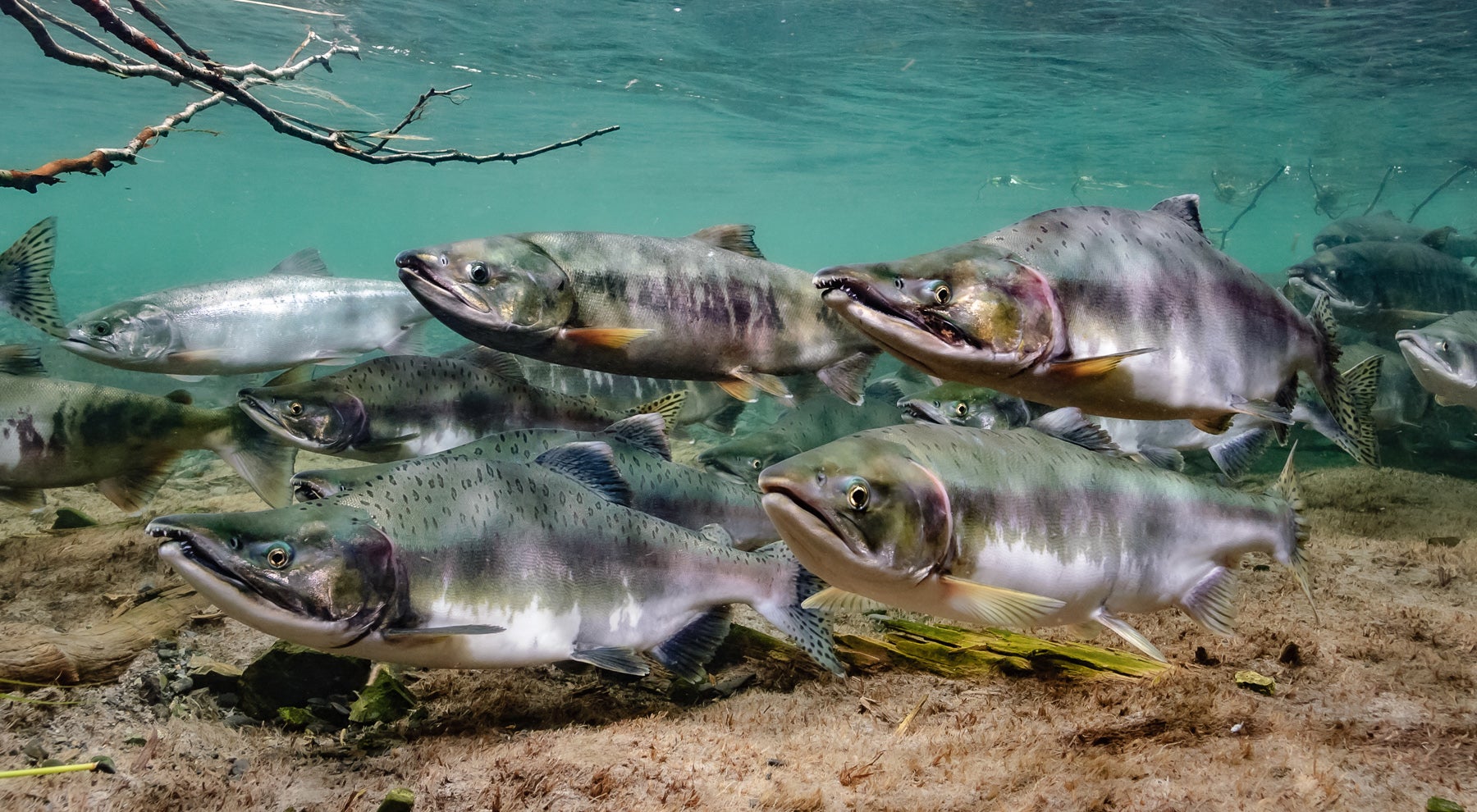Pink, or "humpy" salmon (oncorhynchus gorbuschca), are by far the most abundant salmon species in Alaska. Found primarily in regions 1, 2 and parts of 4, they migrate into fresh water by the hundreds of thousands. Males are easily distinguished from females by the large hump that develops above the spine area, while the females maintain a more slender appearance. As they enter fresh water they begin to change in color from silvery to a darker olive hue and often develop darker blotches that start along the back and extend down the sides of the fish.

Pinks are the most abundant salmon species in Alaska, and are, by far, the easiest of all salmon to catch. They strike a variety of offerings, from bait to all sorts of fly patterns to spinners and spoons. Families interested in getting the kids hooked on fishing would do well to target the pink salmon run as it is almost a sure bet.
Numerous pink salmon hatcheries exist throughout southeast Alaska and in Prince William Sound, which collectively place hundreds of millions of pink salmon into the ecosystem each year. The cumulative total number of hatchery and wild fish has reached staggering proportions in recent years, and raised concerns about negative effects on other species, including seabirds that feed on some of the same forage species consumed by pink salmon.
Saltwater pinks make good table fare, however, fish that are staging off river mouths for the spawning run are often mushy in texture and they lose some of their flavor. Anglers interested in pink salmon for the dinner table would do well to target fish earlier in the season for the best results.
Tactics for Saltwater Pinks
Because of their smaller size and softer flesh, pinks are not usually specifically targeted by saltwater anglers, however, the ease with which they can be caught make them a favorite of families with children who are being introduced to salmon fishing, or experienced anglers looking for action between runs of other species. In many areas of Alaska, pinks run concurrently with other species, particularly kings and silvers, and many pinks are caught incidentally while other species are being targeted.
Trolling
Pinks will take a variety of troll gear, including cut herring, herring strips fished behind flashers, spinners, spoons, and plugs that work for silvers or kings. When targeting pinks specifically, down-size your offerings by at least two hook sizes and you'll catch more fish. Pinks have softer mouths than other salmon species and they are hard fighters for their size. Be careful reeling them in with heavier rods and reels; it's not uncommon for the hook to tear out.
Shore Fishing
Pinks are commonly caught from shore, especially as they stage off river mouths prior to their spawning run. Anglers interested in table fare will likely have to pick through pinks caught during the pre-spawning phase in order to find fresher fish.
Tactics for Freshwater Pinks
As was mentioned, pinks are relatively easy to catch. Small spinners or spoons are very effective, as is fly tackle. Bring a selection of bright, gaudy patterns, and muted patterns for those clear, sunny days. Egg imitations are very effective.
Anglers looking for fish to eat should target pinks closer to saltwater, and plan to pick through darker fish to find the freshest ones.






















